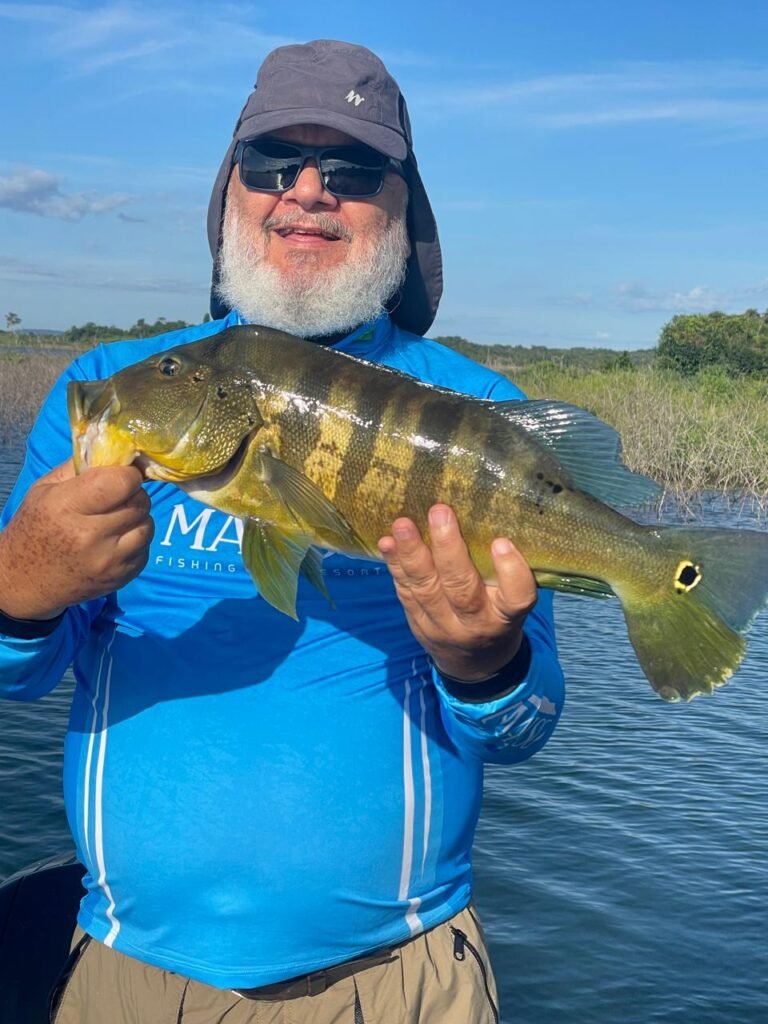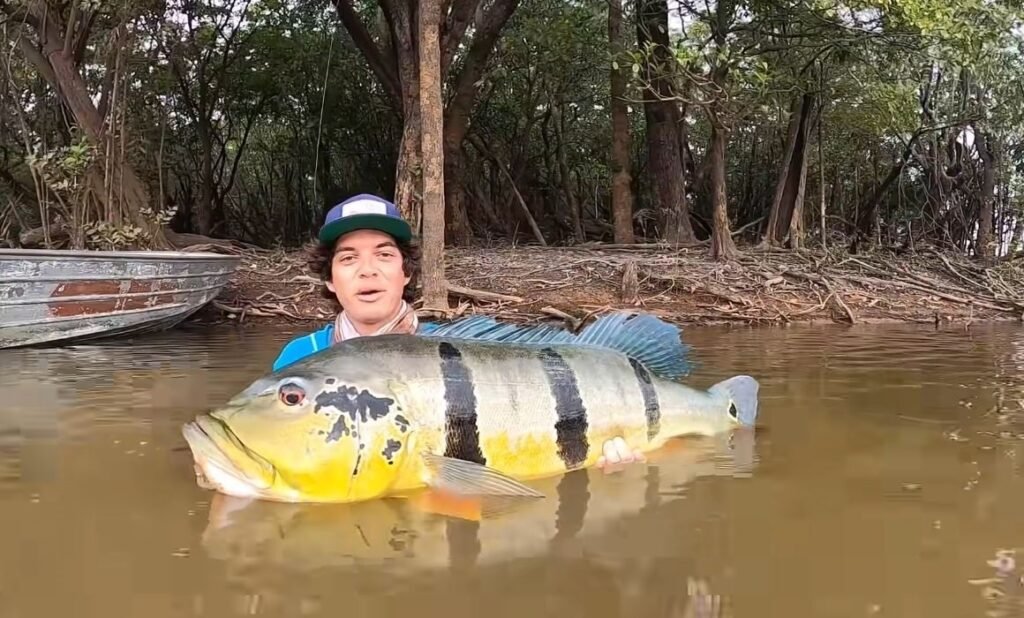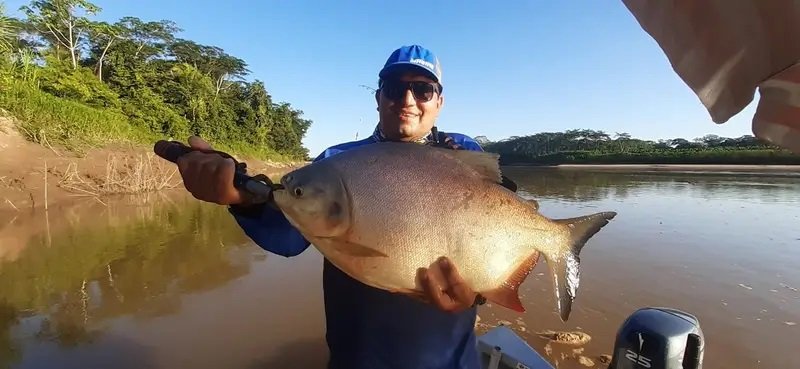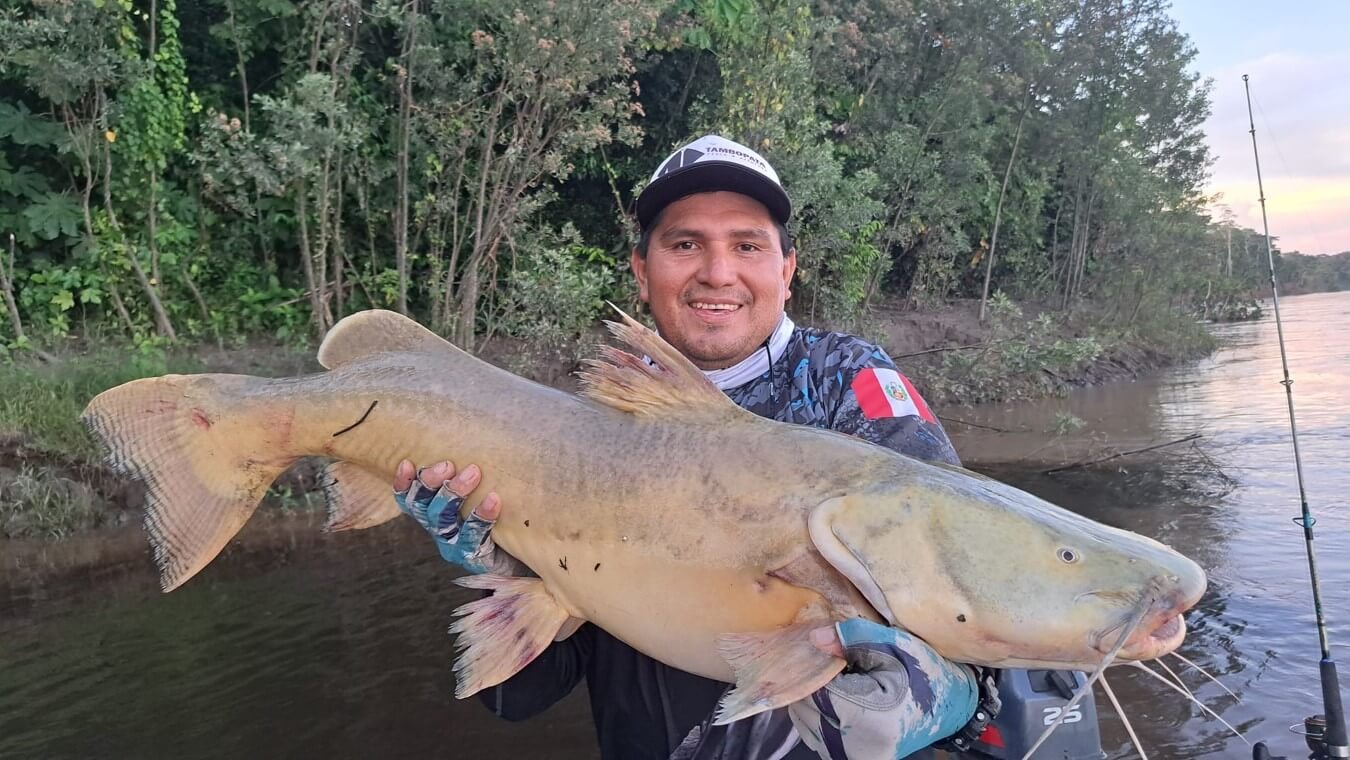Tucunaré fishing is one of the most exciting activities in the Amazonian rivers, where this fish becomes a real challenge for sport anglers. The tucunaré, also known as the “peacock bass” due to its distinctive peacock-eye-like markings, is one of the most sought-after fish by sport fishermen in South America. Its aggressive way of attacking and fighting makes it a highly prized catch. Native to the Amazon basin, this fish is a true gem for fishing enthusiasts, not only because of its strength but also because of its beauty and size. Let’s explore everything you need to know about this magnificent fish.

What is the Tucunaré?
The tucunaré belongs to the genus Cichla and is known for being a fierce predator in its natural habitat. There are several species of tucunaré, but the most well-known are:
- Cichla ocellaris (common tucunaré)
- Cichla temensis (the largest of all)
- Cichla monoculus These species vary in size and color, but all share the same aggressive behavior when hunting and defending their territory.
Tucunaré Morphology: Key Characteristics for Fishing
The tucunaré is a robust, elongated fish with a large mouth adapted to catch large prey. Its coloration is one of its most distinctive traits, varying between shades of green, yellow, and orange, and with the “eye-like” spots on its caudal fin (hence the name “peacock bass”), which act as decoys to confuse predators and rivals.
- Average size: It can grow up to 1 meter in length, though most specimens caught range between 40 and 70 cm.
- Weight: Some specimens can exceed 10 kg, with the largest ones found in rivers like the Amazon and its tributaries.
- Colors: It varies from olive green, yellow, and orange tones, with dark stripes running horizontally along its body.

How to Recognize the Tucunaré
The tucunaré is easily recognizable by its distinctive markings:
- Spot on the caudal fin: A dark round mark that simulates an eye, giving it the common name “peacock bass.”
- Horizontal stripes: Typically, three dark stripes along its body.
- Bright coloration: During the breeding season, the males’ colors become more vibrant, especially the yellows and oranges.
Differences Between Male and Female Tucunaré: Tips for Fishermen
The main difference between male and female tucunaré is visible during the breeding season:
- Males: During the spawning period, males develop a hump on their head known as the “nuptial hump,” which makes them larger and gives them a more imposing appearance.
- Females: Although they do not develop the hump, females also have bright colors, but they are generally smaller compared to the males.

Tucunaré Habitat and Behavior: Fishing Strategies
The tucunaré inhabits tropical, clear, and warm waters, preferring areas with submerged vegetation, fallen tree trunks, and rocks, which it uses to ambush its prey. It primarily feeds on other fish, but will not hesitate to attack any prey it perceives as a threat to its territory, making it an aggressive and bold hunter.
- Water temperature: It prefers temperatures between 77°F and 86°F (25°C to 30°C), which explains its prevalence in the Amazon basin.
- Diet: Its diet consists mainly of smaller fish, but it also eats insects and small reptiles when available.
Effective Techniques for Catching Tucunaré in the Amazon
The tucunaré is an extremely coveted fish in sport fishing, both for its size and its ferocity in the water. The most common techniques to catch it include:
- Fishing with artificial lures: The tucunaré responds very well to lures that mimic other fish, such as crankbaits, jerkbaits, and poppers. Surface lures are particularly effective, as the tucunaré often jumps out of the water to catch its prey.
- Fly fishing: For more experienced anglers, the tucunaré can be caught using fly fishing techniques, with large patterns that mimic small fish.
- Recommended gear: Fast-action rods, reels with good line capacity, and brightly colored lures are usually the most effective.

Where Does It Come From?
The tucunaré is native to the river basins of South America. It has been found in rivers in Brazil, Peru, Bolivia, and Venezuela, adapting to different habitats in these regions.
Tucunaré Habitat and Behavior: Keys to Successful Fishing
The ideal habitat for the tucunaré includes:
- Freshwater: It prefers tropical and warm rivers and lakes.
- Subaquatic vegetation: Tucunaré thrive in areas with dense vegetation, which provides shelter and hunting opportunities.
The tucunaré is a fascinating fish that not only adds beauty to the Amazonian rivers but also offers an exciting challenge for sport fishermen. Learning more about its biology, behavior, and habitat not only enriches our appreciation of this species but also helps us become more successful anglers.

Ready to experience the thrill of catching a tucunaré? With Amazonas Fishing, you can explore the best destinations in the Amazon basin and live an unforgettable adventure in the world of sport fishing.





